Many foodies all around the world have a particular place in their hearts for Persian desserts. This tea-drinking culture provides a range of delicious sweet treats that are ideal for special occasions and everyday enjoyment. You’re in for a tremendous treat if you have a serious sugar tooth.
The greatest sweets from Iran’s culinary scene are featured in this post as we embark on an unusual gastronomic journey. To quickly gratify a crowd, let’s find out how to prepare and serve them.
Here are 22 delectable Iranian desserts and sweets you need to try.
Why Iranian Desserts are Special
Iranian pastries are delicious, distinctive, and savory. Depending on the country of origin, each is unique from the others. Iranian sweets provide a wide variety of alternatives for everyone, including Iranian Baghlava, rice puddings, ice cream and traditional cakes.
Iranian pastries are notorious for using a lot of saffron, which makes them difficult to resist. They are renowned for their overpowering sweetness and slight rosewater undertone.
The Rich History of Iranian Desserts
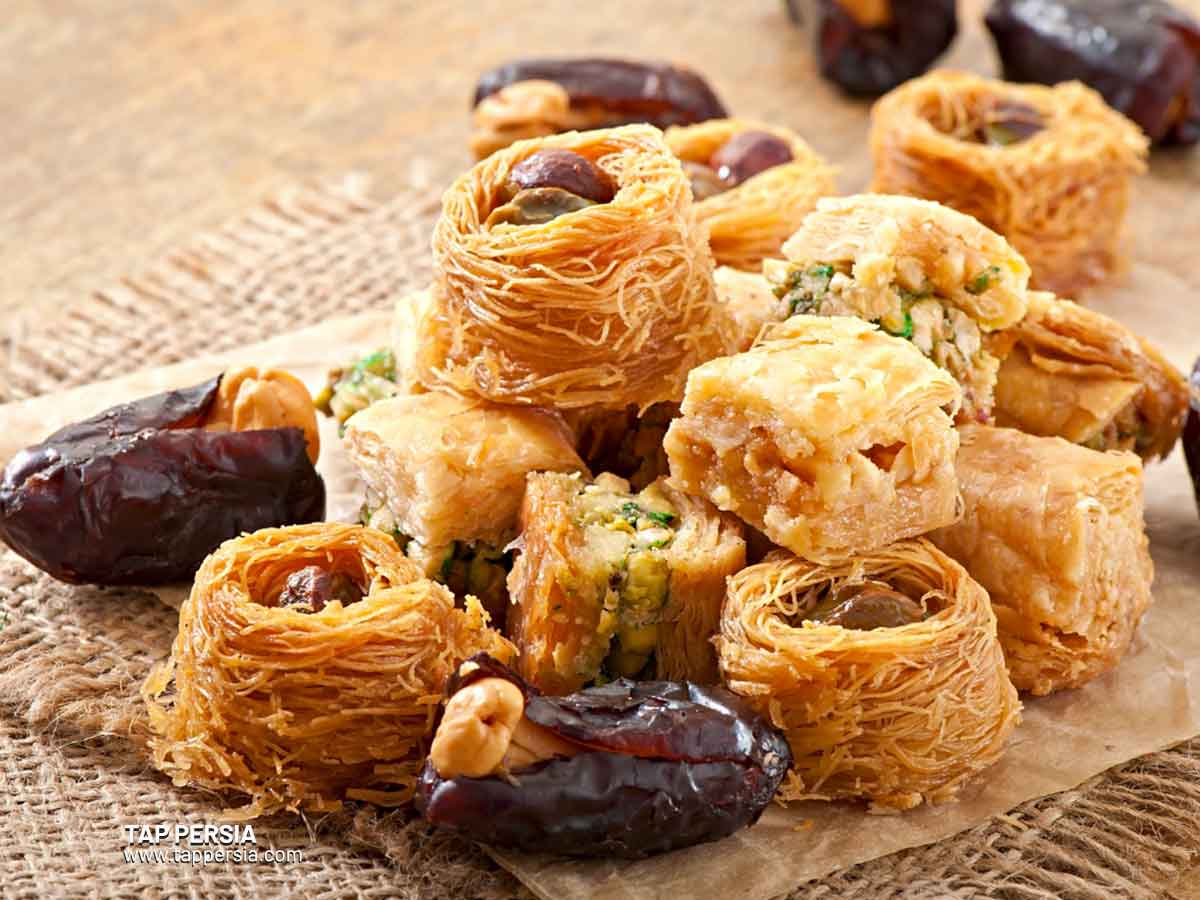
Before it reached Europe, sugar initially made its way to the Middle East sometime after the first century AD. Prior to the usage of sugarcane, however, honey and other fruits like dates, apricots, and pomegranates served as the main sources of sweetness. There were lots of pistachios, almonds, and sesame seeds, as well as flavors like rosewater, orange-flower bloom, saffron, and cardamom.
Confections were culinary status symbols that may be plated in gold or served in plaited baskets of ivory, creating an aromatic and aromatic food environment that many civilizations would have enjoyed. The culture of sweetness was one of elegance and invention: the earliest ice cream-like delicacies, which date back to 550 BC, are even linked to ancient Persia.
The influence of the Silk Road on Persian sweets
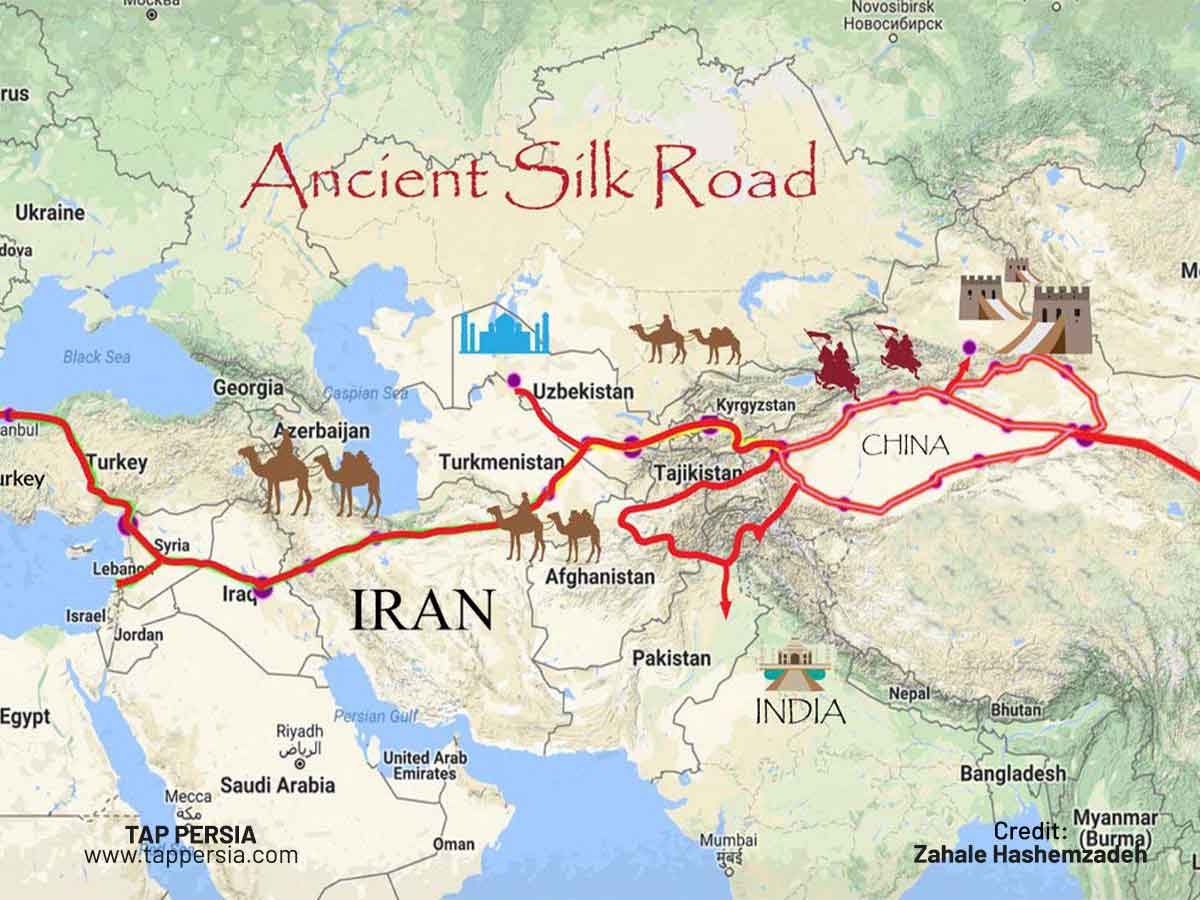
Along its path, the Silk Road united historical Iranian centres of civilisation. The Silk Road served as a conduit for both commercial and cultural interaction between Iran and China, two powerful nations. Over the Silk Roads, goods such as grains, fruits, vegetables, and spices were transported from one region to another by land and water. In each new site, these goods were incorporated into and converted into regional specialties by existing meals and dishes.
Many regularly used herbs, such as basil and cilantro, as well as a number of well-known dishes, such as sweet and sour sauces and almond desserts, originated in Iran. Indian and Chinese cuisine has affected some of the ingredients used in Iranian sweets, while Iranian sweets have had a significant impact on numerous sweets from the aforementioned nations as well as nations in the west. Even the names of some of the vegetables and fruits, including lemon and pistachios, have Persian origins.
A Journey through Iran’s Provinces
When you travel through the provinces you will notice that just as there is a lot of diversity in ethnic groups, natural and historical places and weather, the Iranian desserts and sweets are different compared to each other as well. For instance, you will find Pashmak in Yazd, Gaz in Isfahan and berenji in Kurdistan.
Ingredients that Make Iranian Desserts Unique
Here are the tasty and exotic ingredients used in Iranian desserts:
1.Saffron – The Red Gold
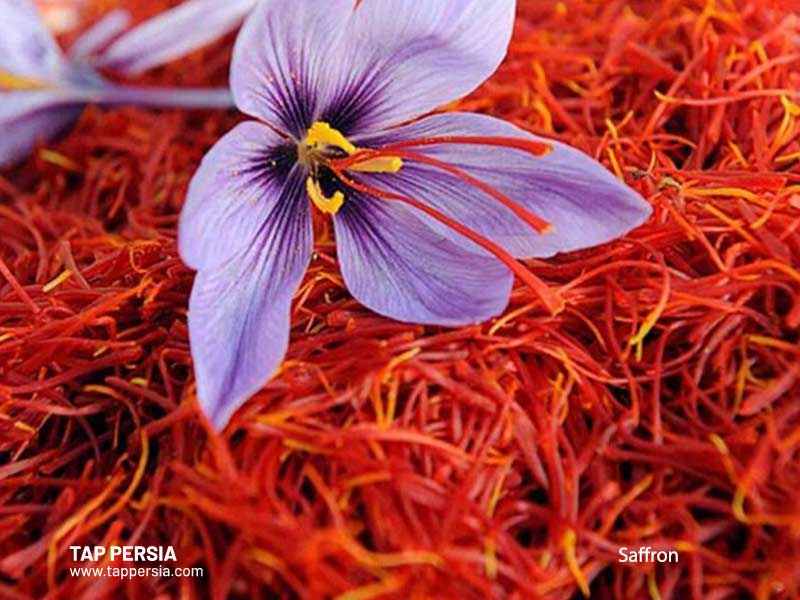
Saffron, commonly referred to as “Red Gold,” is a very precious and pricey spice with a lengthy history in the food and drug sectors. Over 90% of the world’s supply comes from Iran, which is the leading producer in the world. With 390 tons of saffron being cultivated and sold, Iran has the best wholesale saffron industry in the whole nation.
Saffron is a wonderful component in foods and traditional ice cream since it is just one gram for every 500 stigmas. Iranian saffron producers also create tasty and maybe healthy saffron-based goods including saffron pudding, saffron rock candy, saffron mixed cake powder, saffron jelly and the popular saffron tea.
2.Rose Water – A Fragrant Touch
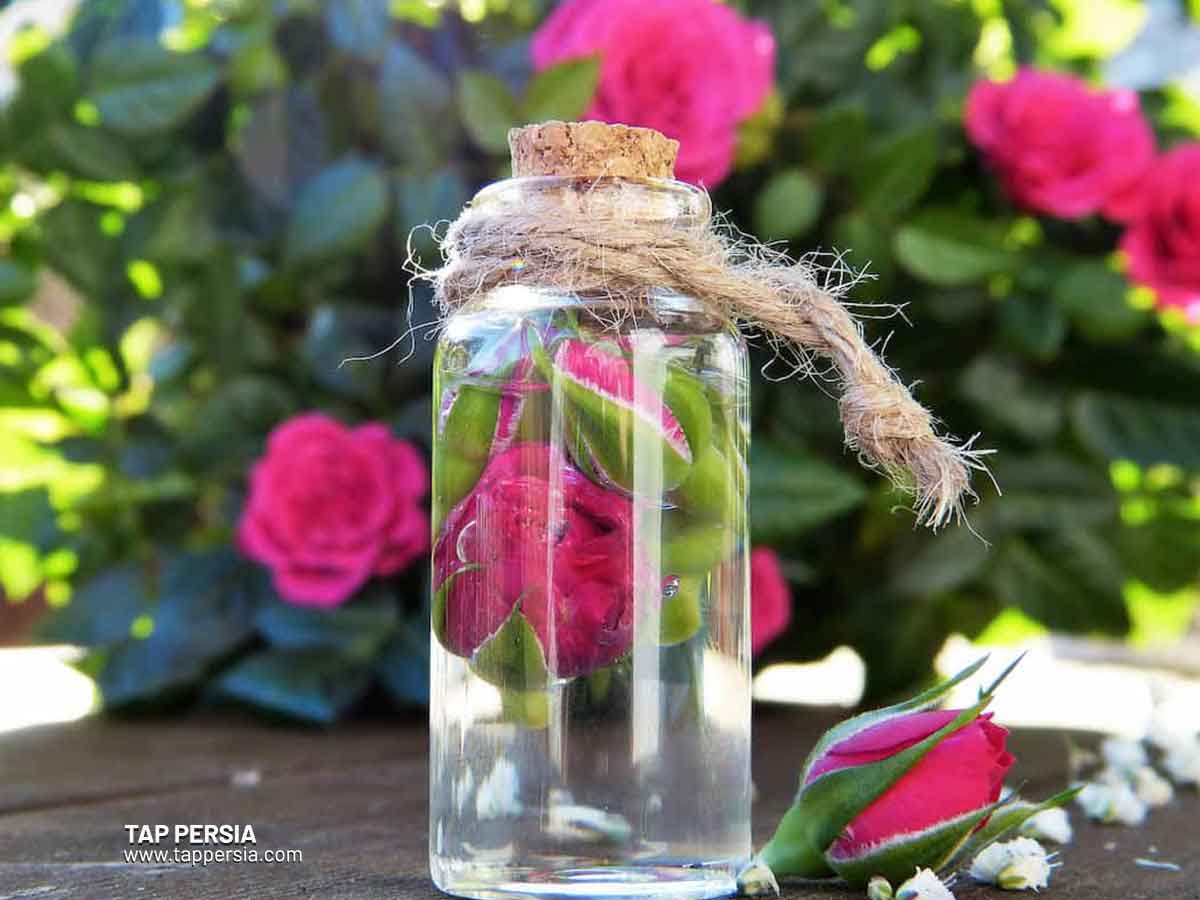
Since ancient times, Iranians have used rose water, known as “Golab” in Persian, as food, medicine, and even perfume. Iranians like rose because it promotes happiness and relaxation and is utilized both during celebrations and times of mourning. The delight of Iran’s ancient religious rites is enhanced by the combination of pink petals and a rose smell.
For their celebrations, they cook a variety of Iranian halvas and pastries using rose water.
The two most popular ice cream flavors in Iran are traditional saffron and Faloodeh, which the latter is frequently served with lime juice from a bottle. It’s delightfully chilly and the perfect way to end a great dinner made with premium ingredients.
Rose water is also sparingly used in Iran to flavor cold beverages, tea, biscuits, and other treats.
3.Nuts and Dried Fruits
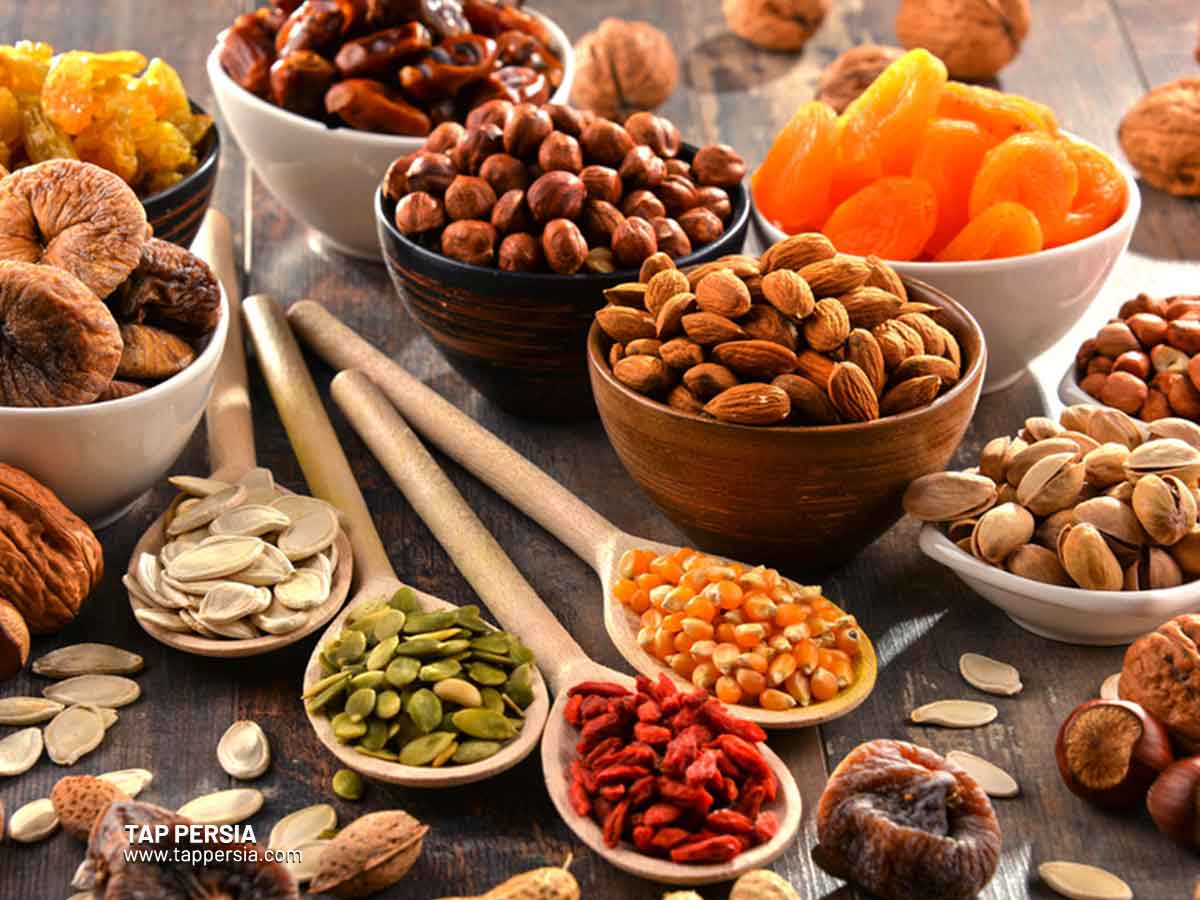
Iran Dried fruits are mostly dried either naturally, with sun drying, or with specialized dryers such as heated wind tunnel dryers or dehydrators. Dried fruit has mostly kept the nutritional value of fresh fruit. Iranian nuts have a hard shell and a seed that is usually edible and packed with nutrients. They are tasty, packed with vitality, and rich in vitamins and minerals. Iranian dried fruits and nuts are super healthy foods because of their nutrients. They offer dietary potassium, fiber and a number of bioactive substances that protect the body’s health.
They are used in Iranian cookies, sweets, ice cream and other types of unique desserts.
22 Must-Try Iranian Desserts
1.Sholeh Zard
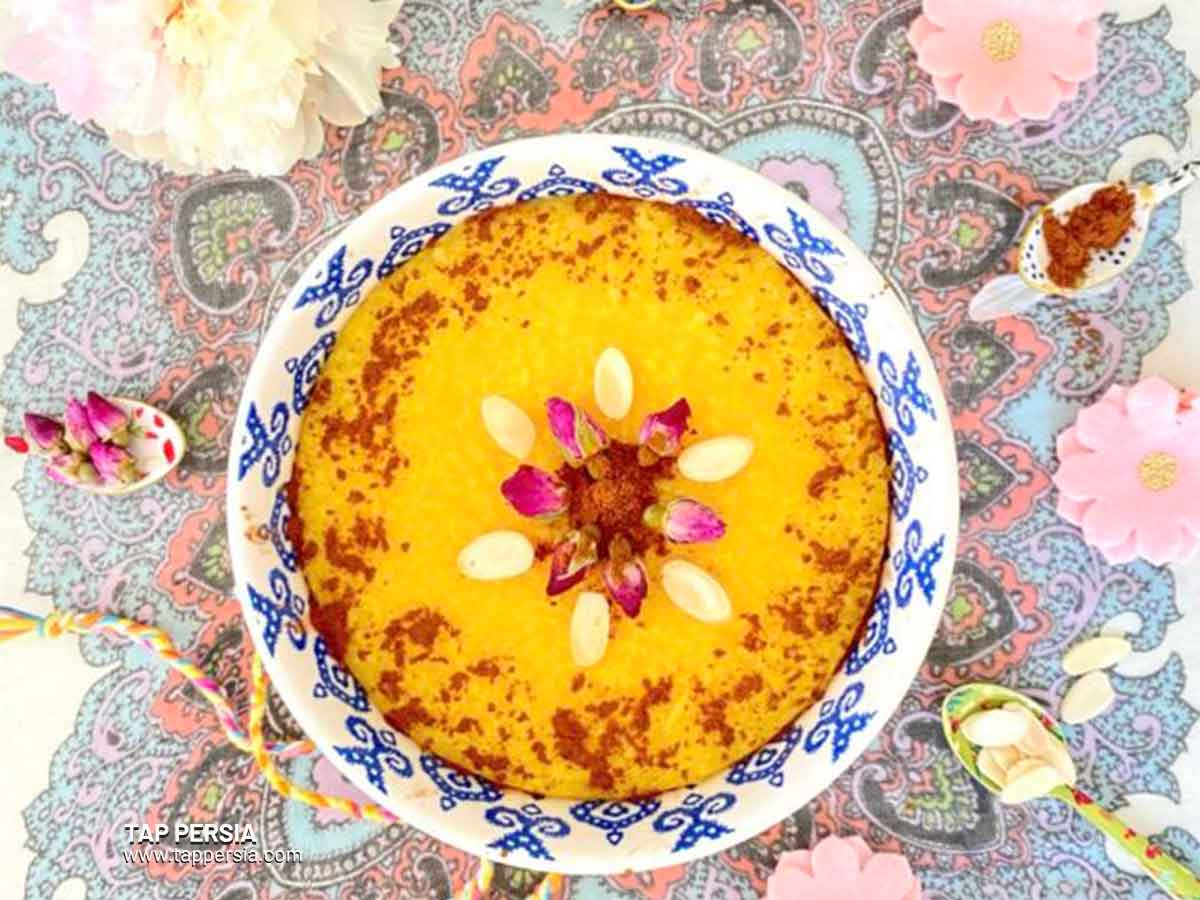
A type of rice pudding popular in Iran is called Sholezard. Its name translates to yellow pudding. Some folks could say Sholeh Zard instead. This traditional sweet Iranian delicacy has a delicate texture. It is stuffed with a traditional Persian candy flavor. A glass topped with pistachios and cinnamon powder holds the exquisite dessert.
When this delicacy is being served, you can even smell the lovely perfume of saffron and rose water in the air. This straightforward and satisfying dish is typically made in Iran, especially during Ramadan. However, you may always sample traditional Iranian sweets all year round.
2.Faloodeh
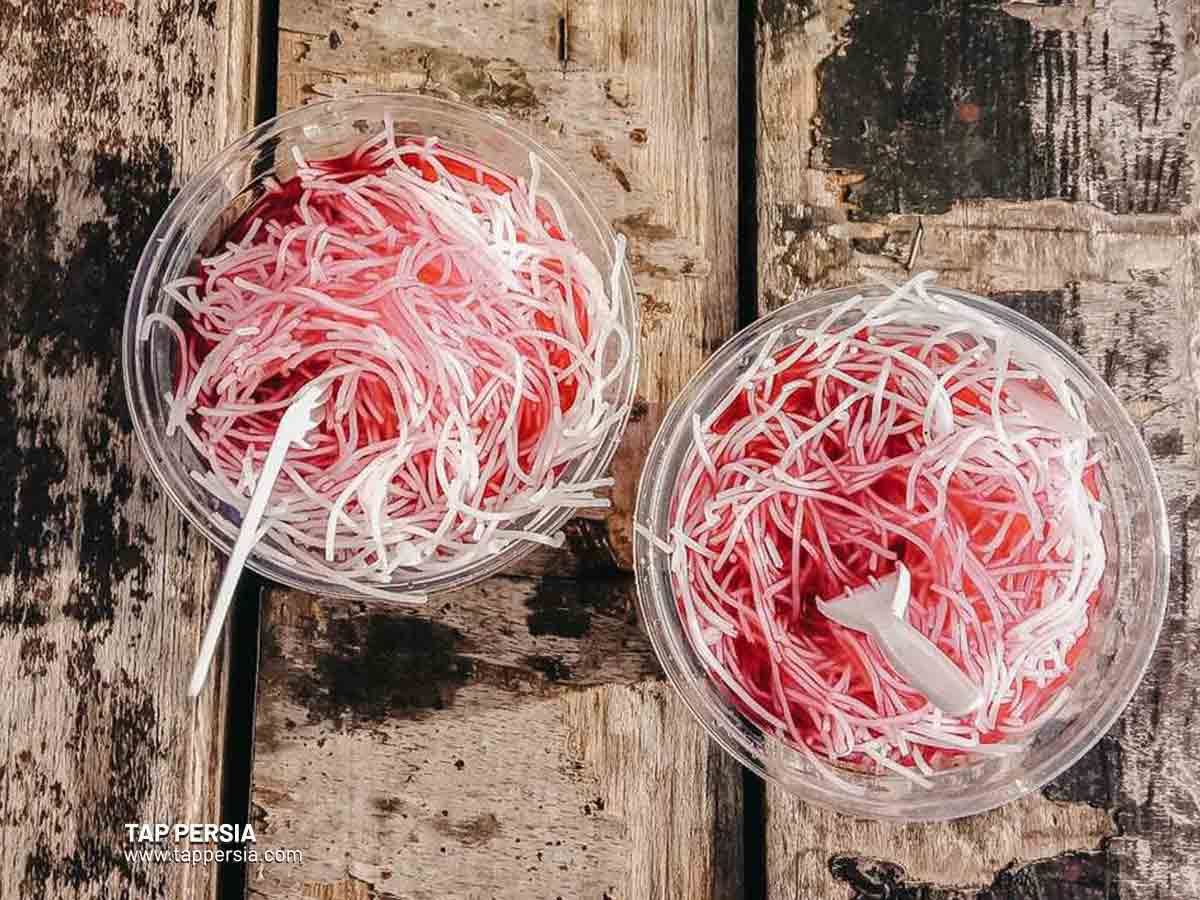
Iran’s regional delicacy of Faloodeh is semi-frozen chilling. Summertime street food favorites include this Persian dessert. Vermicelli, a syrupy sweet rose water, and lime are used to make it. Faloodeh offers a rich fusion of flavors that you just can’t miss, despite the fact that the pairing might seem odd. With a hint of lime’s sourness, the traditional Iranian treat is sweet.
For a soul-refreshing treat amid the heat, savor this gourmet treat. It is available at any ice cream parlor in the area.
Here are some popular Iranian snacks that people often enjoy throughout the day. You can also read the article about famous Iranian cuisine for more information.
3.Bastani Sonnati
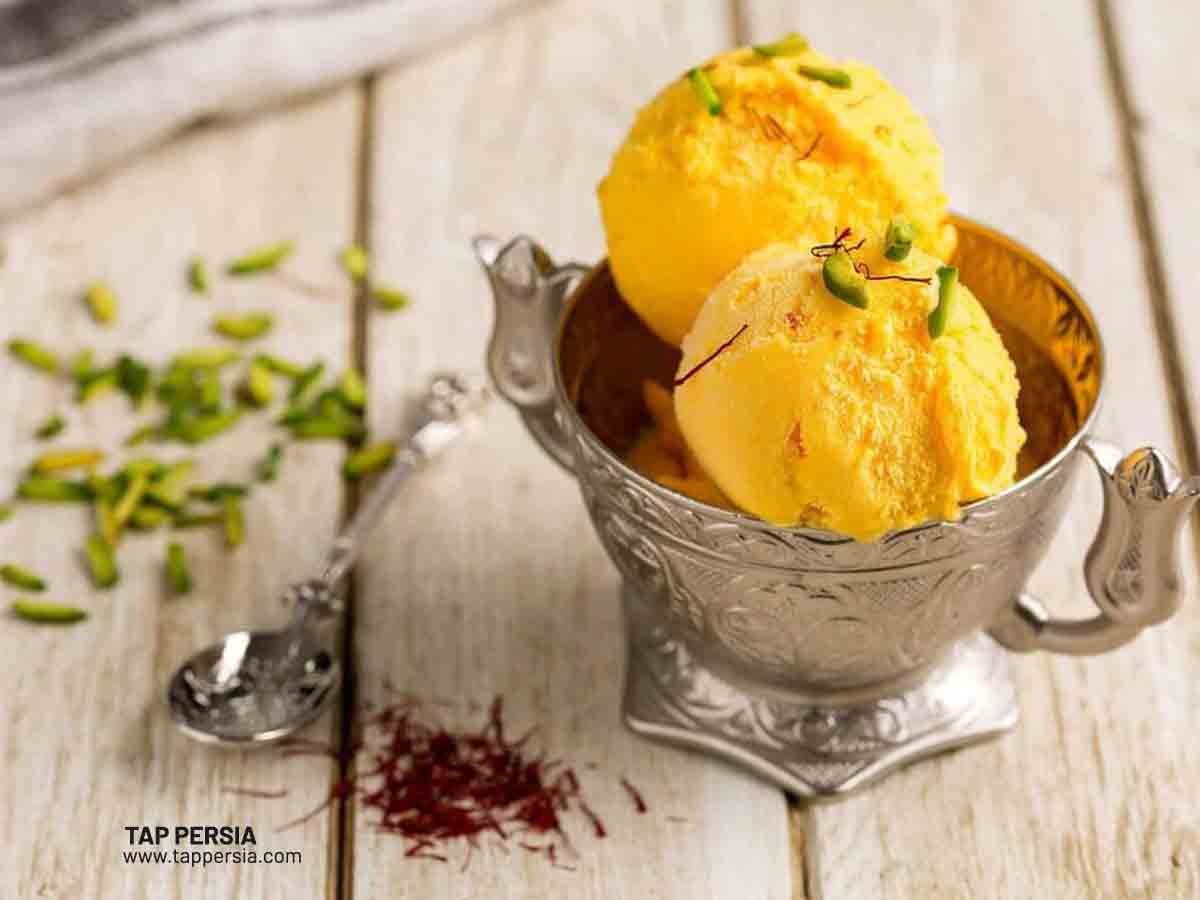
Even after visiting the nation, if you’ve never tried this Iranian ice cream, you’ve definitely missed something. It is a crucial component of Iranian sweets. It is everyone’s favorite and is regarded as the country’s official ice cream.
An excellent alternative to vanilla, chocolate, or strawberry ice cream is Bastani Sonati. Both the materials and the method of preparation are relatively straightforward. But compared to other Iranian desserts, it truly stands out thanks to the natural flavors of saffron, rosewater, and mastic.
This ice cream has an interesting and complex personality thanks to its vibrant yellow color and vivacious rosewater, saffron and mastic scent. Mastic is a resin that has solidified and has a sticky, slightly chewy feel. The ice cream scoops are available in a serving dish or between two delicate wafers.
4.Zoolbia & Bamieh

One of the oldest Iranian sweets is Zoolbia & Bamieh. The two primary components of Zoolbia Bamieh are Zoolbia and Bamieh, which are always found paired together. Saffron and rosewater syrup is used to soak both Zoolbia and Bamieh.
In Iran, because of its sapidity, Zoolbia Bamieh is one of the most essential foods for the month of Ramadan.
Like other Iranian desserts, Zoolbia & Bamieh goes great with a steaming mug of Persian black tea.
5.Gaz
Don’t forget Persian Gaz while purchasing Iranian sweets as gifts or for your own delight. This delectable Iranian treat is from the Isfahan region and is well-liked all around the nation.
Persian nougat is a more popular name for Persian gaz abroad. It’s because roasted almonds, sugar, and egg whites are used to make the toffee. The outcome is sweet with a nutty flavor and a rose, savory undertone.
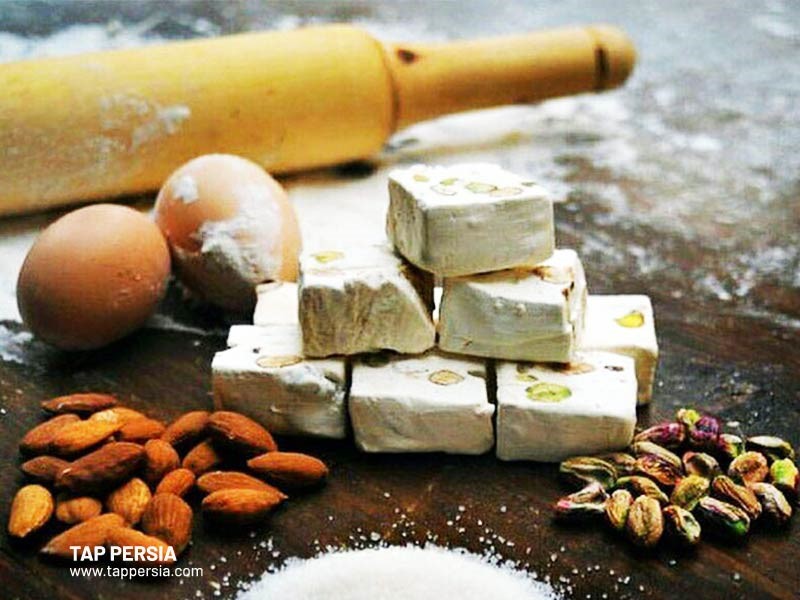
On Nowroz, toffee is frequently formed into a circle. They are best served nowadays when chopped into little rectangular shapes. These Iranian desserts used to be given as gifts to visitors by the people.
6.Qottab

Qottab is loaded with tiny bits of almond and walnut that are sweetened and deep-fried by rolling in sugar powder. Qottabs are distinctively Yazdi sweets.
7.Halva
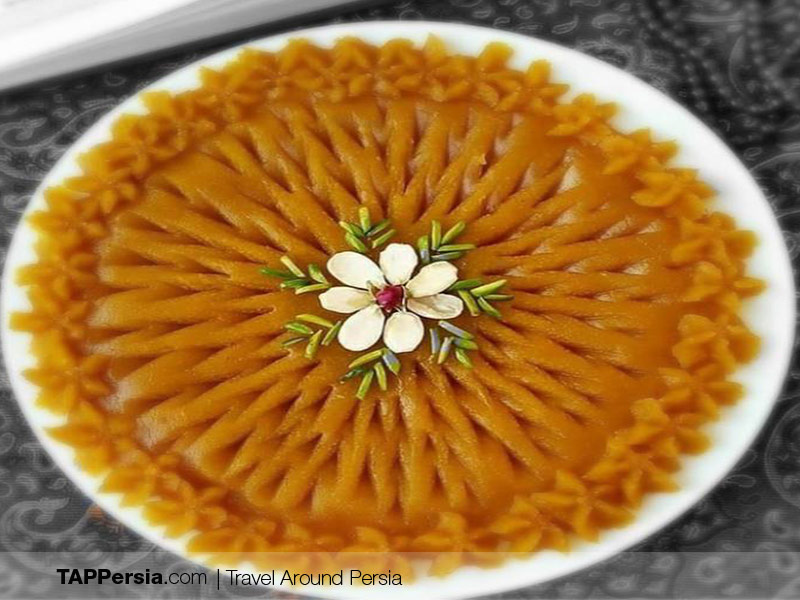
The Iranian culture is highly popular for its halva. Although the recipes vary greatly, it is also prepared in other locations, including India and other North African nations. Originally, the term “halva” meant “sweet” in Arabic. The way this dessert is used in Iran has undergone significant alteration throughout time. It used to be prepared for rituals like weddings and given as gifts. In modern times, Persian halva is typically offered at funerals or prepared and given to others as a religious delicacy, but it is still one of the most popular, delectable and healthful sweets among Iranians among other sweets.
8.Ranginak
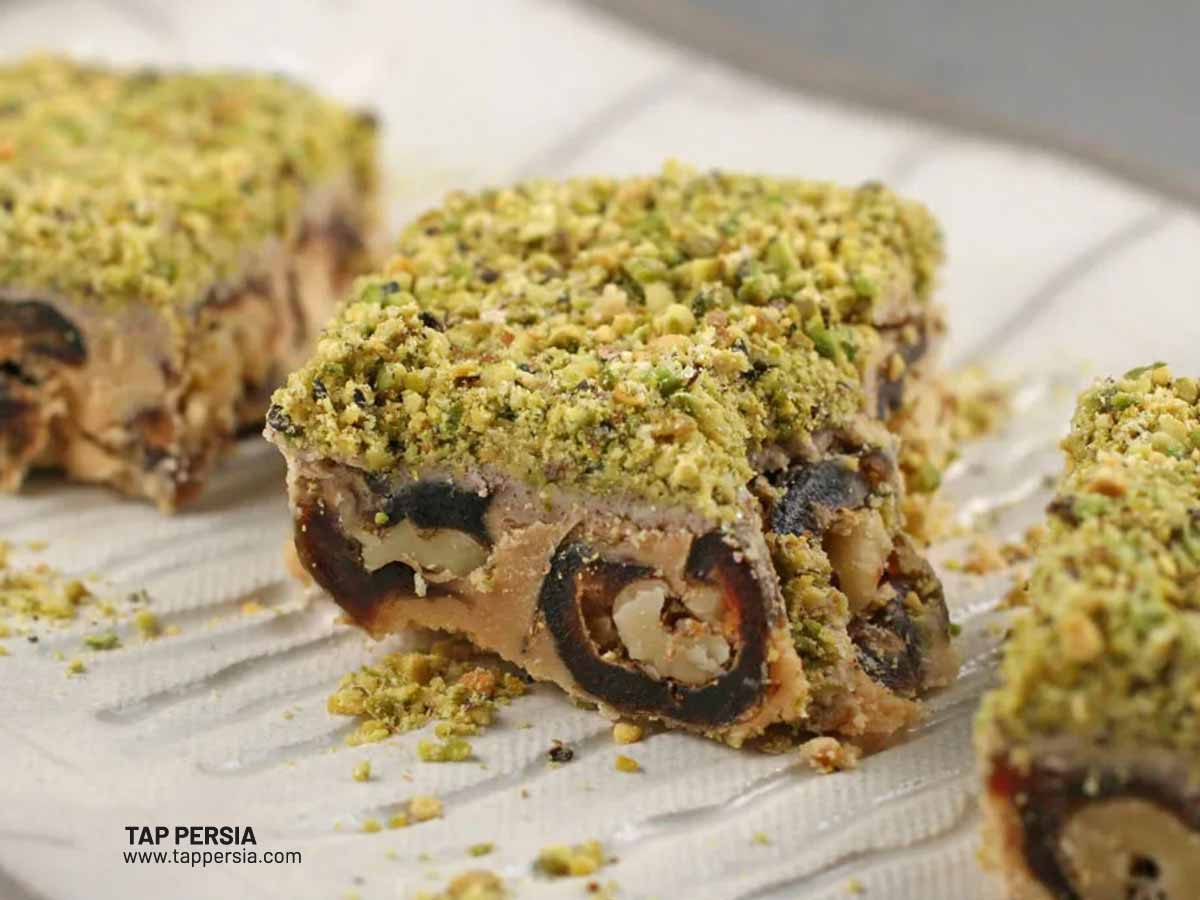
This Middle Eastern supper would be well-rounded with this no-bake Persian dessert. Dates, walnuts, butter, and toasted flour are used to make this dessert, which is also quite nourishing and energizing. Date cakes are another name for it. In the southern parts of Iran, there are many Ranginak recipes based on the aforementioned components. Numerous varieties of dates are the primary export from this area.
9.Sohan
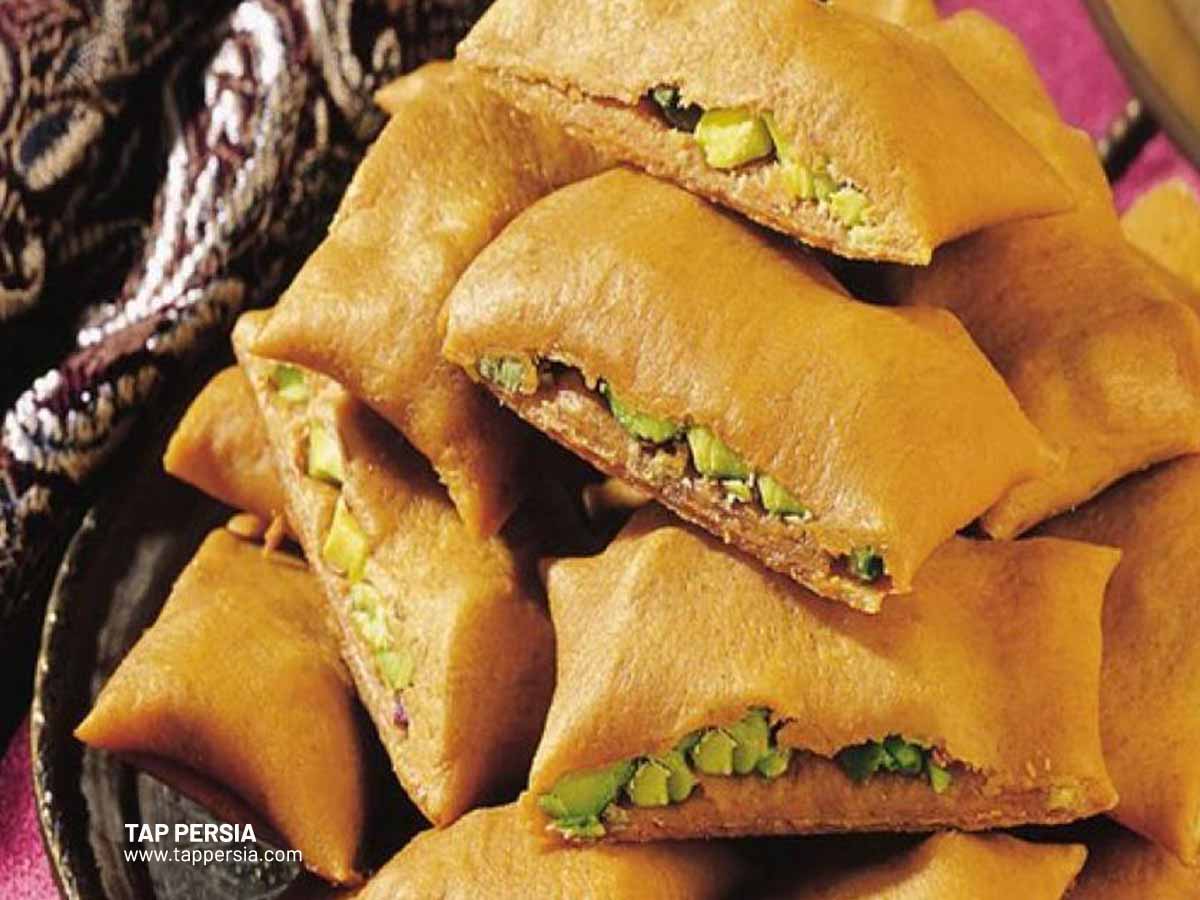
As one travels through central Iran, the components get increasingly loaded with special Persian elements like saffron and rose water. Sohan(Iranian sweets), a unique dessert and souvenir from Qom is something delicious to consider. It is made from egg, wheat germ, sugar, butter, cardamom and rosewater.
10.Kolompeh
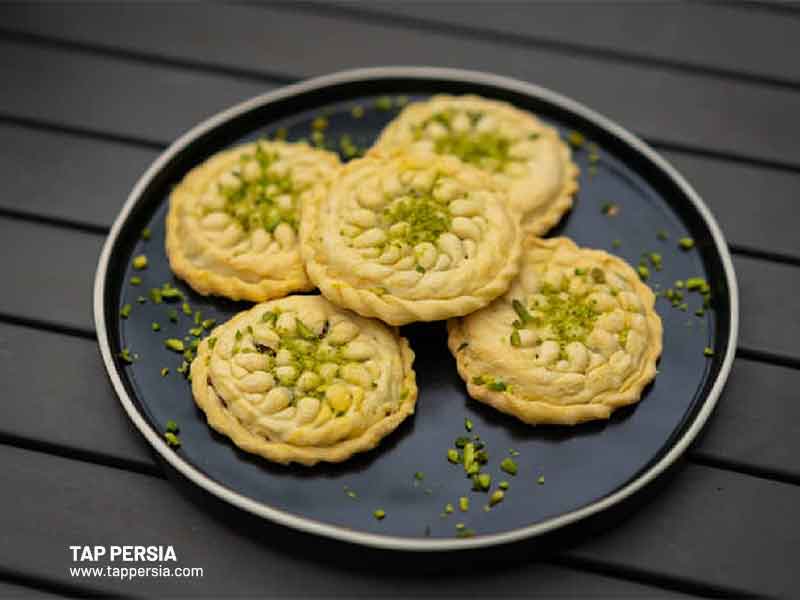
A filled little, circular, flat cake from Kerman. It contains ground dates, cardamom powder, and other regional flavors. Pistachios that have been crushed are used as decorations.
11.Reshteh Khoshkar
In Gilan Province, Iran, Reshteh khoshkar is the customary biscuit made specifically during Ramadan. It is made of rice flour, packed with sugar, spice, cardamom, cinnamon, and ginger, and then cooked in hot fat or oil.
12.Baghlava
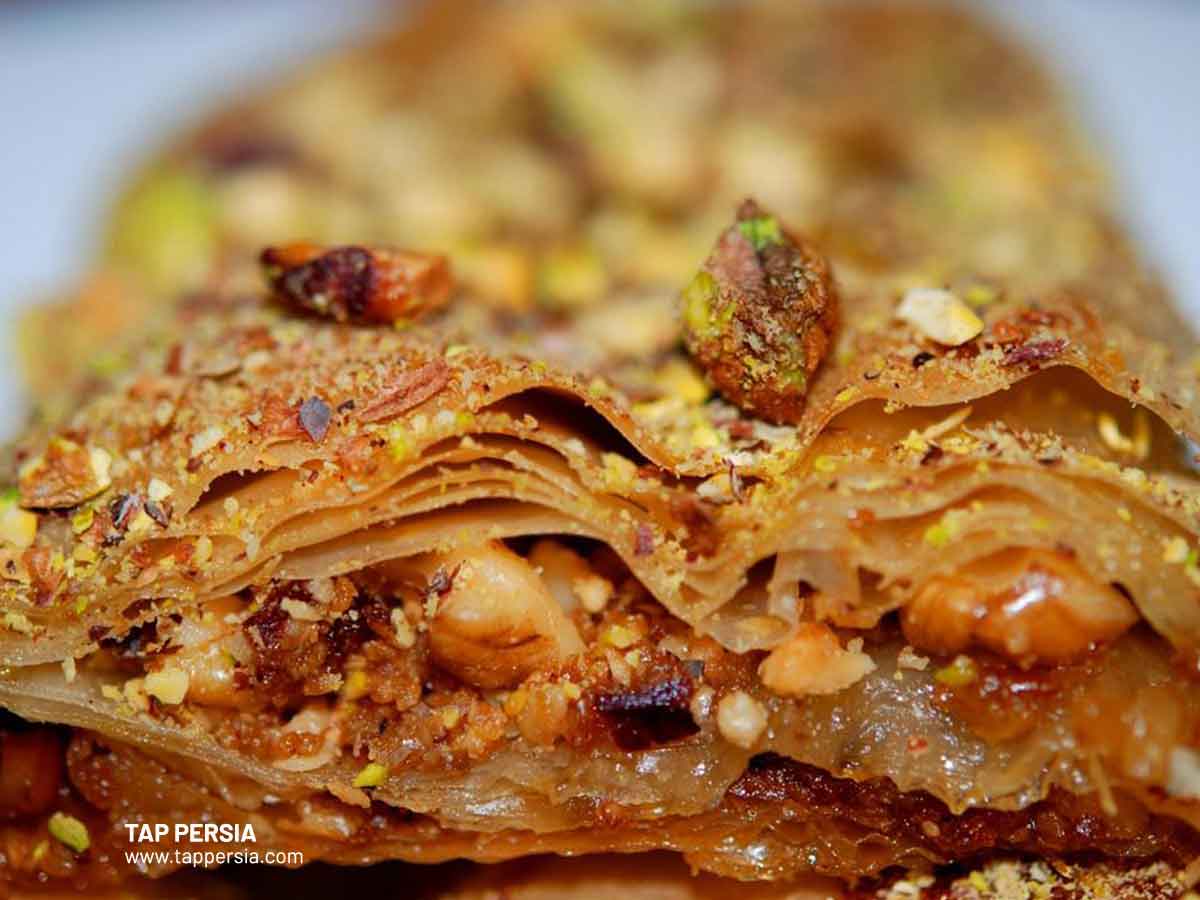
A delectable sweet delicacy popular in Greece, Central Asia, and the Middle East. It has a long history and has had hundreds of produced recipes from ancient times.
Baklava, also known as Baghlava, has adopted local traits from Persian sweet cuisines. Baghlava from Iran is lighter and drier than those from Turkey or the Arab world. It is smaller and sliced into diamond-shaped pieces. Rosewater syrup is used to flavor it, and it is filled with crushed almonds, pistachios, and cardamom. The two major Persian Baghlava centers are Yazd and Qazvin.
13.Yazdi Cupcake
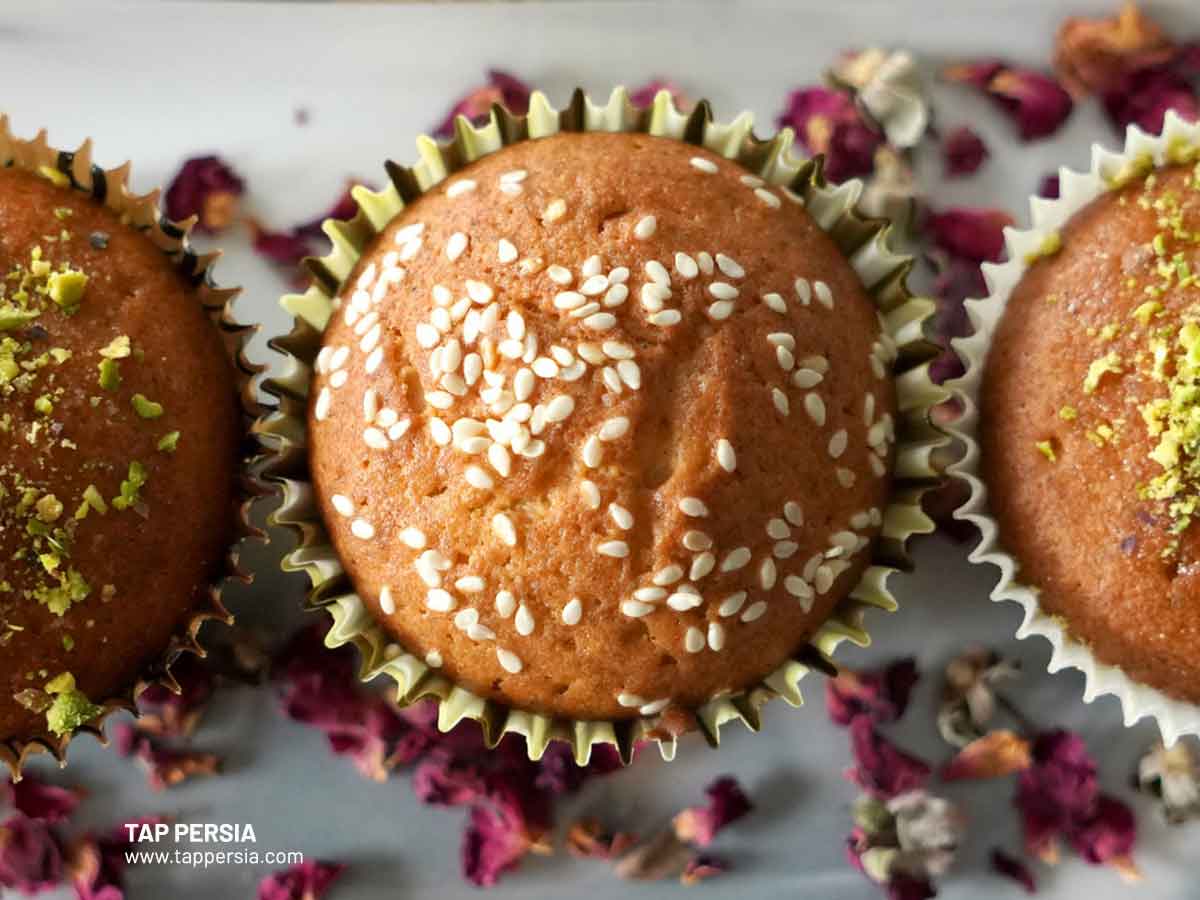
Yazdi cupcakes are little, fluffy Persian desserts that are not overly sweet. Although cupcakes have their roots in the United States, Yazd, an Iranian city, is where you can get them in Iran. Compared to conventional sponge cakes, it is a little dryer.
The Yazdi cake may also be had for breakfast. Additionally, they are ready for a variety of rituals in the province of Yazd. Cardamom, rosewater, pistachios, and almonds are what give Persian food its distinctive scent and flavor.
14.Naan Berenji
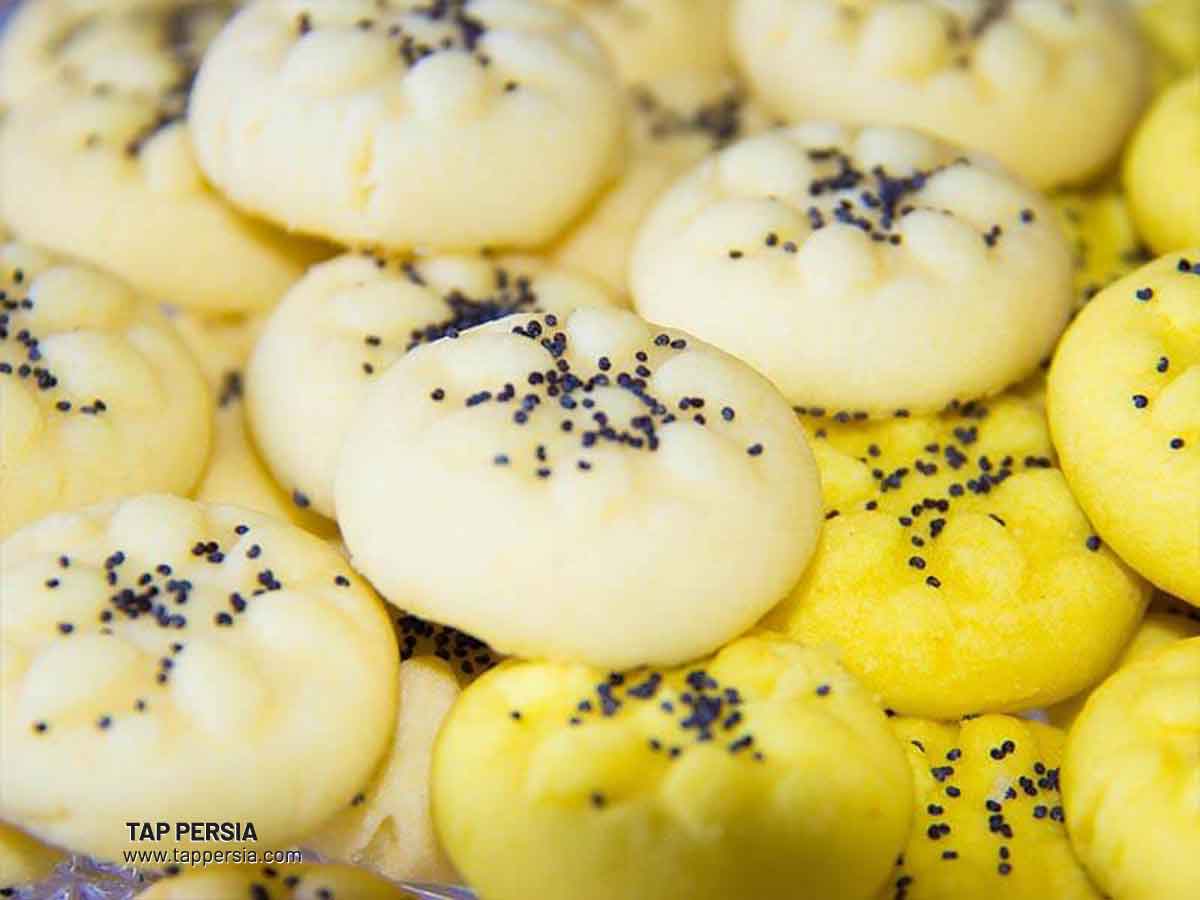
Nan-e Berenji is a well-known dessert in the western areas (Kurdistan and Kermanshah). Egg yolk, saffron, rice flour, rose water, cardamom, sugar, and other ingredients are used to make little biscuits. These Persian cookies don’t contain any gluten.
15.Saffron Rock Candy (Nabat)
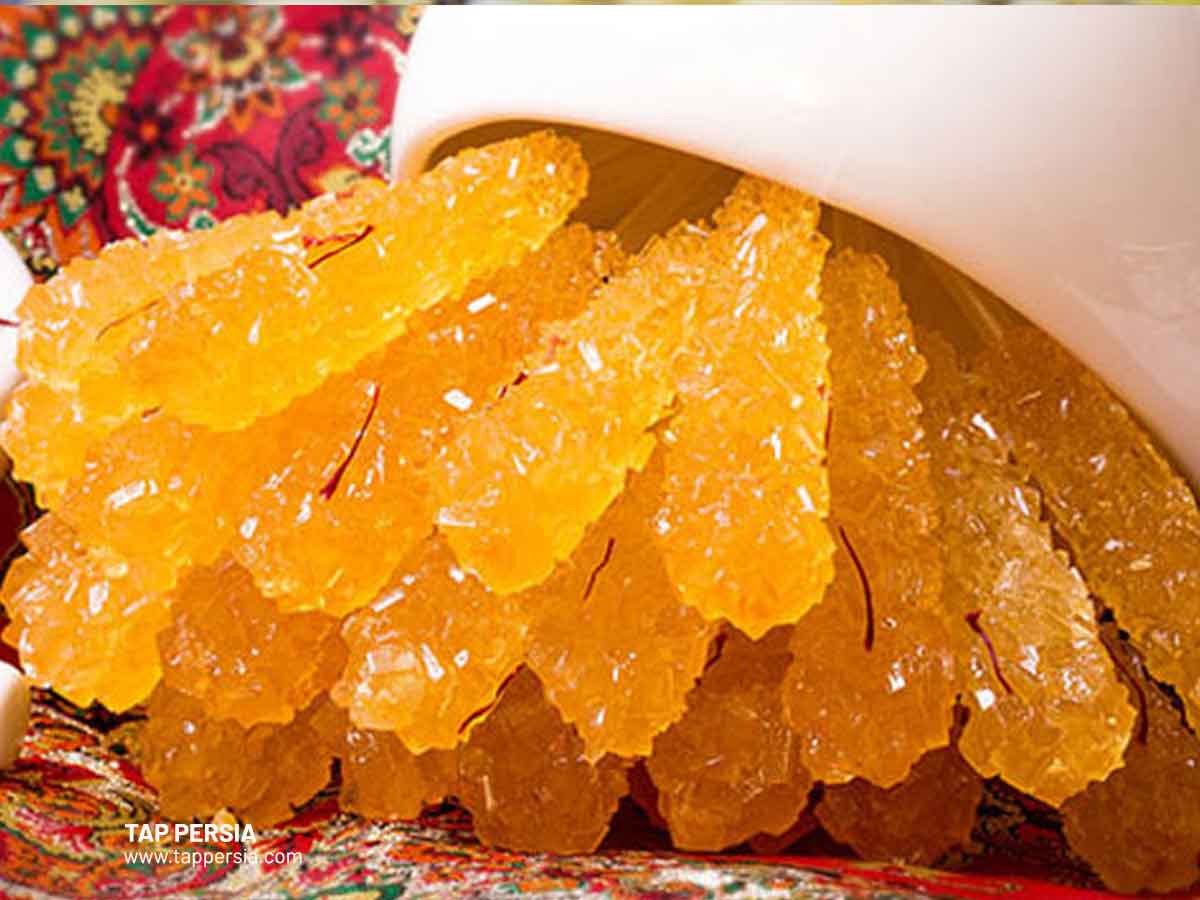
Nabat, a Persian sweetener for tea and hot beverages, is often referred to as Rock Candy or Crystal Candy. It is made of sugar crystals that have been infused with saffron essence, giving it a distinctive and charming pale orange tint, a magnificent saffron scent, and a delicious flavor.
16.Masghati
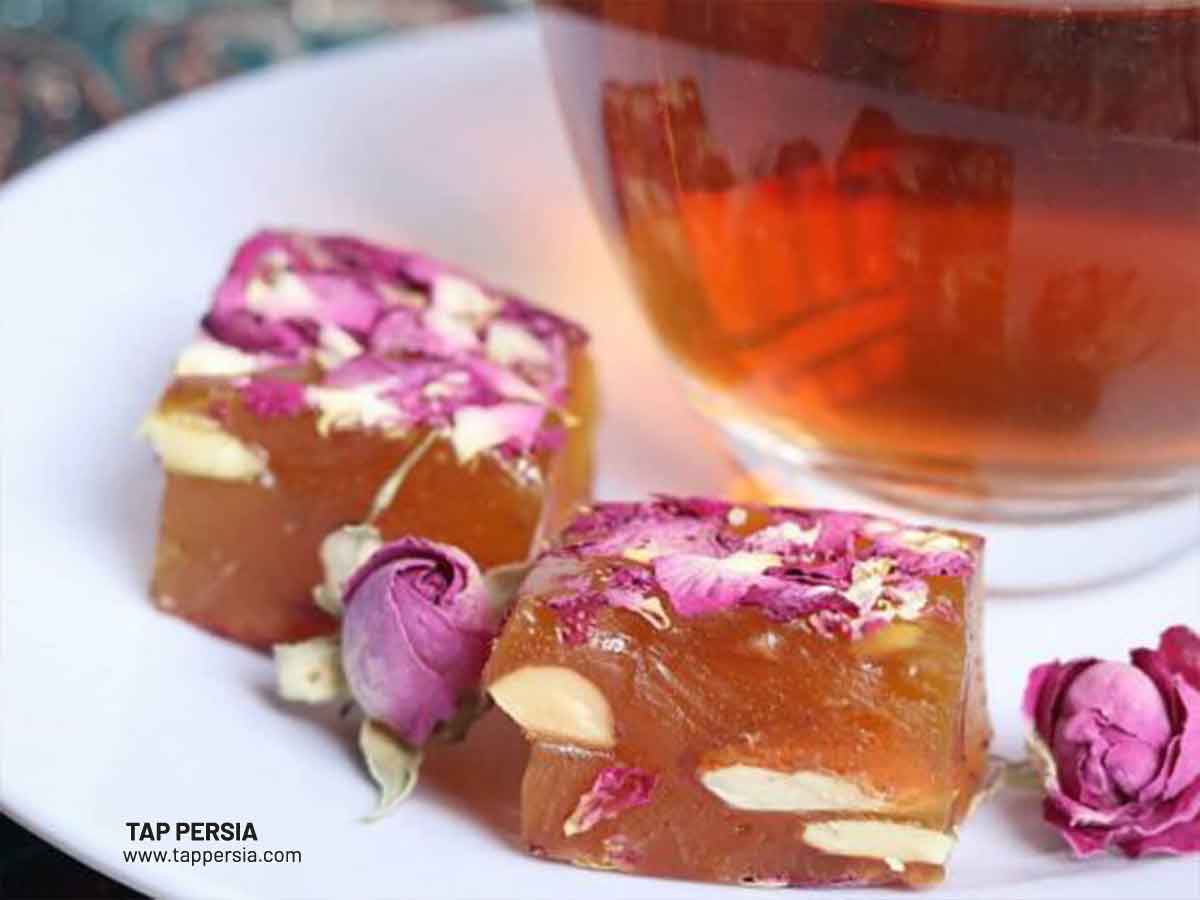
Masghati is a well-known Iranian delicacy that has a soft, jelly-like consistency and is created with starch, rosewater, nuts and saffron. Since the primary components are the same everywhere, vegans and others who avoid gluten may enjoy it. Due to its high sugar content, Masghati is a favorite in southern Iran and good for diabetic people.
17.Pashmak
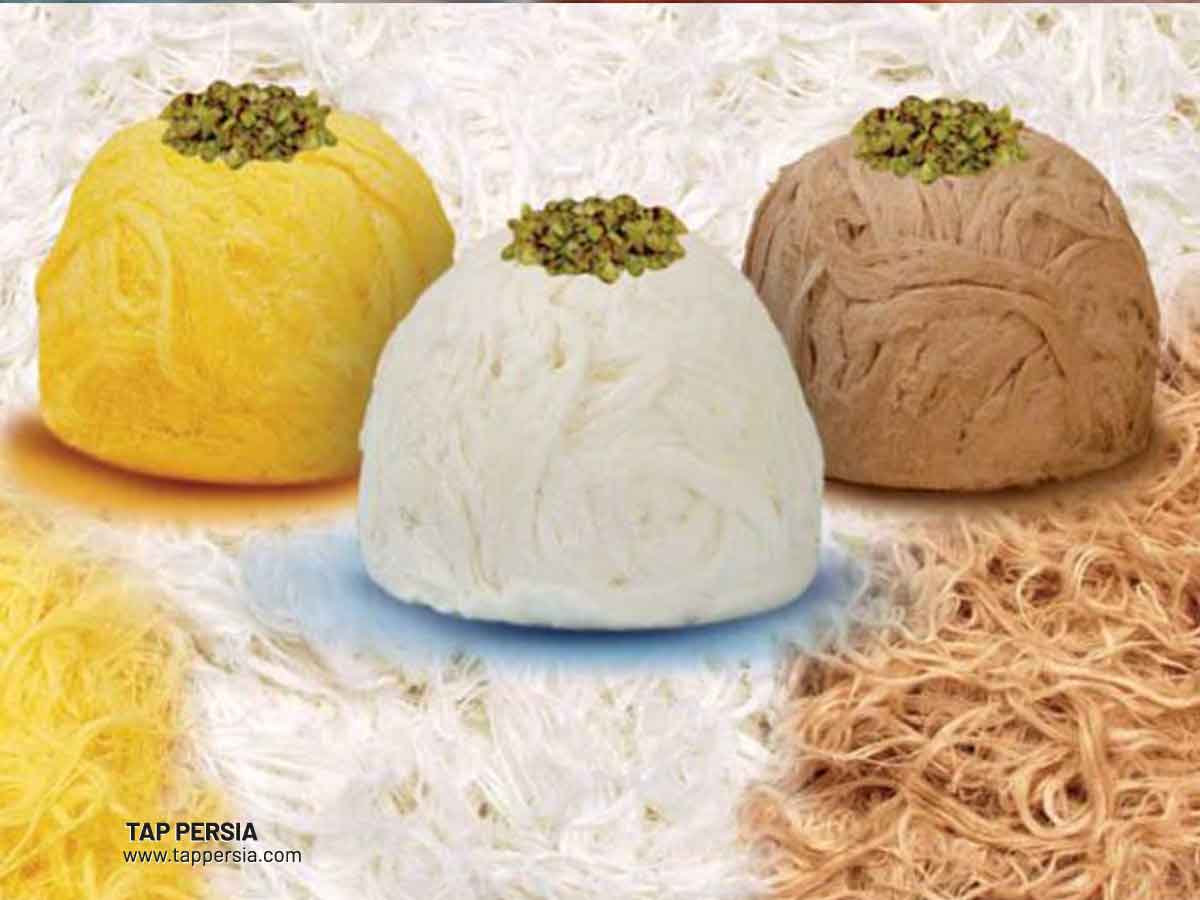
A type of Iranian cotton candy or candy floss called Pashmak was first manufactured in Yazd. Pashmak can be consumed on its own or as a side dish with fruits, cakes, ice creams, puddings, and other Persian desserts. It is frequently referred to as Persian Cotton Candy. Ground pistachio nuts are occasionally used as a garnish. The process and the ingredients are different, despite the texture being identical to cotton candy.
18.Lavashak
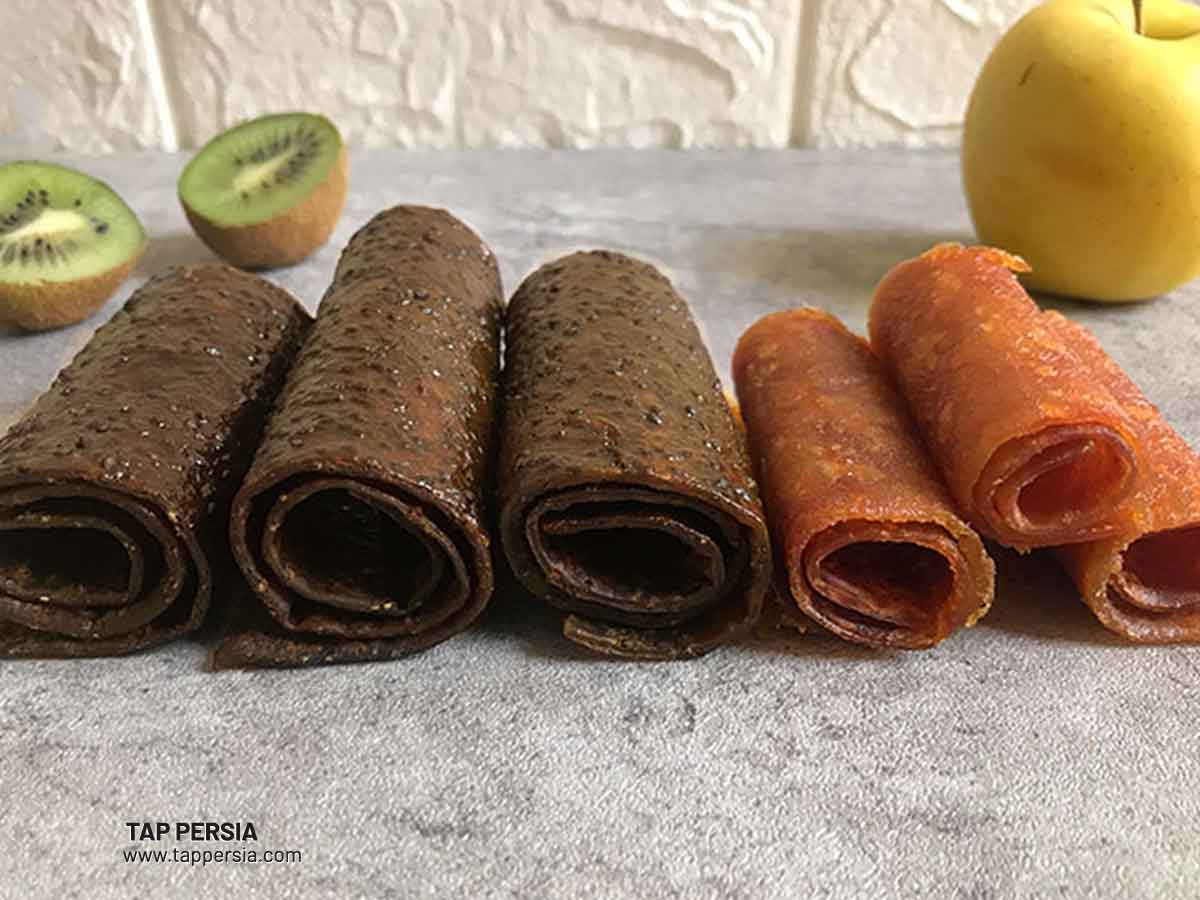
Fruit leathers are known as Lavashak in Iran. Salt is added after the fruit purée has been cooked. Then, spread it out in the tray in thin layers. Typically, they dry the tray on rooftops.
Lavashak originates from Iran, and most of the well-known varieties there has a sour flavor. Lavashak is served with pomegranate paste, prunes, Gheisi (dried apricots) and Torshak to accentuate its sour flavor.
19.Khagineh
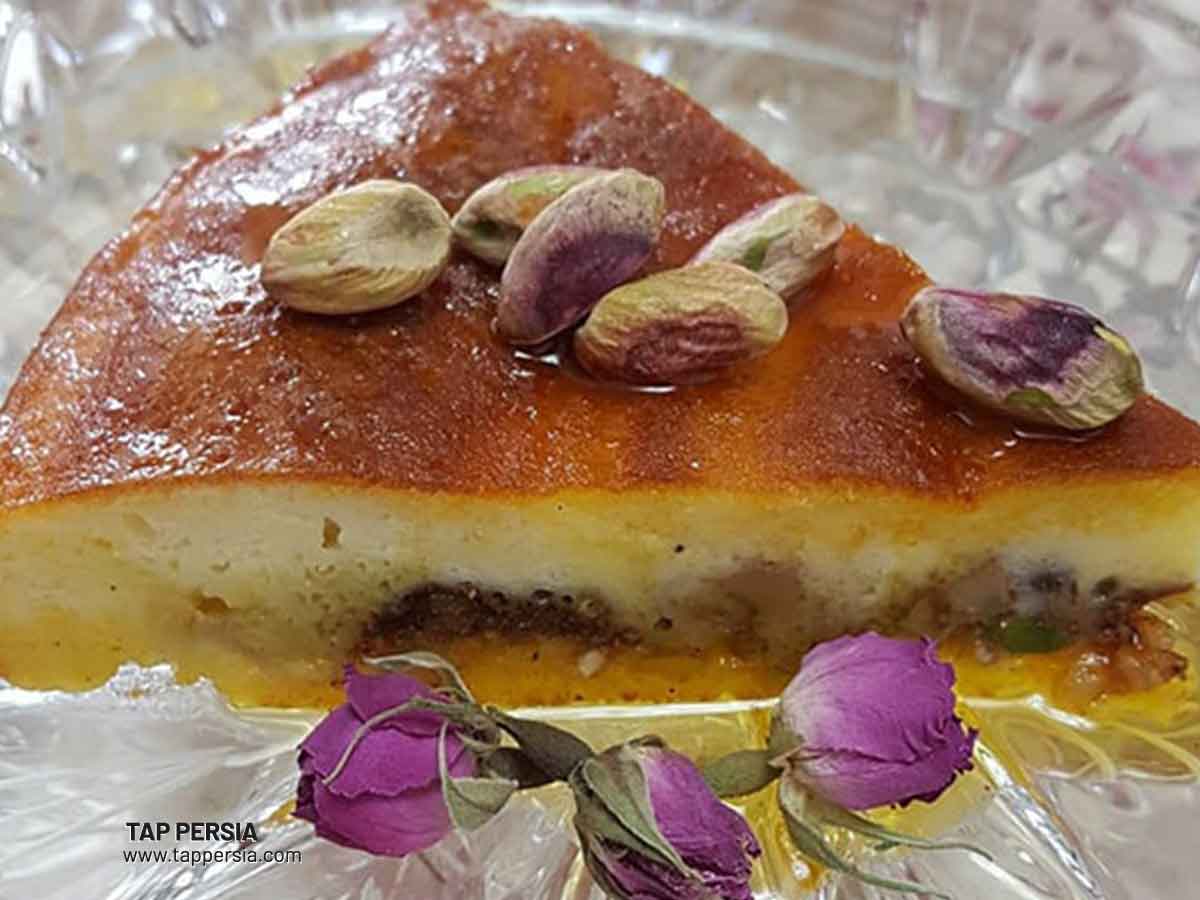
Saffron, powdered cardamom, sugar, butter, and eggs make up the simple and delicious Persian meal known as Khagineh, which may be best translated as “sugar omelet” or a type of crêpe. It is incredibly simple to create and has flavor, scent and texture. It can be served as an after-dinner dessert or for breakfast, lunch, or brunch.
20.Samanu
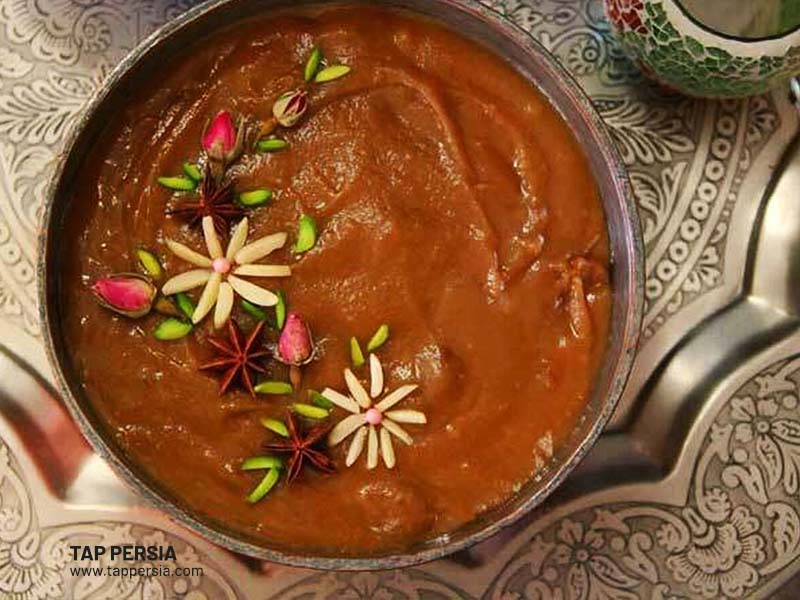
Traditional Persian sweets produced from germinated wheat are called samanu, sometimes spelled Samanak and Saman.
It’s vital to keep in mind that Samanu is a patience-testing dessert before proceeding with the cooking instructions. It is one of the best Persian New Year desserts that is also used on the 7-sin table.
21.Shir Berenj (rice milk)
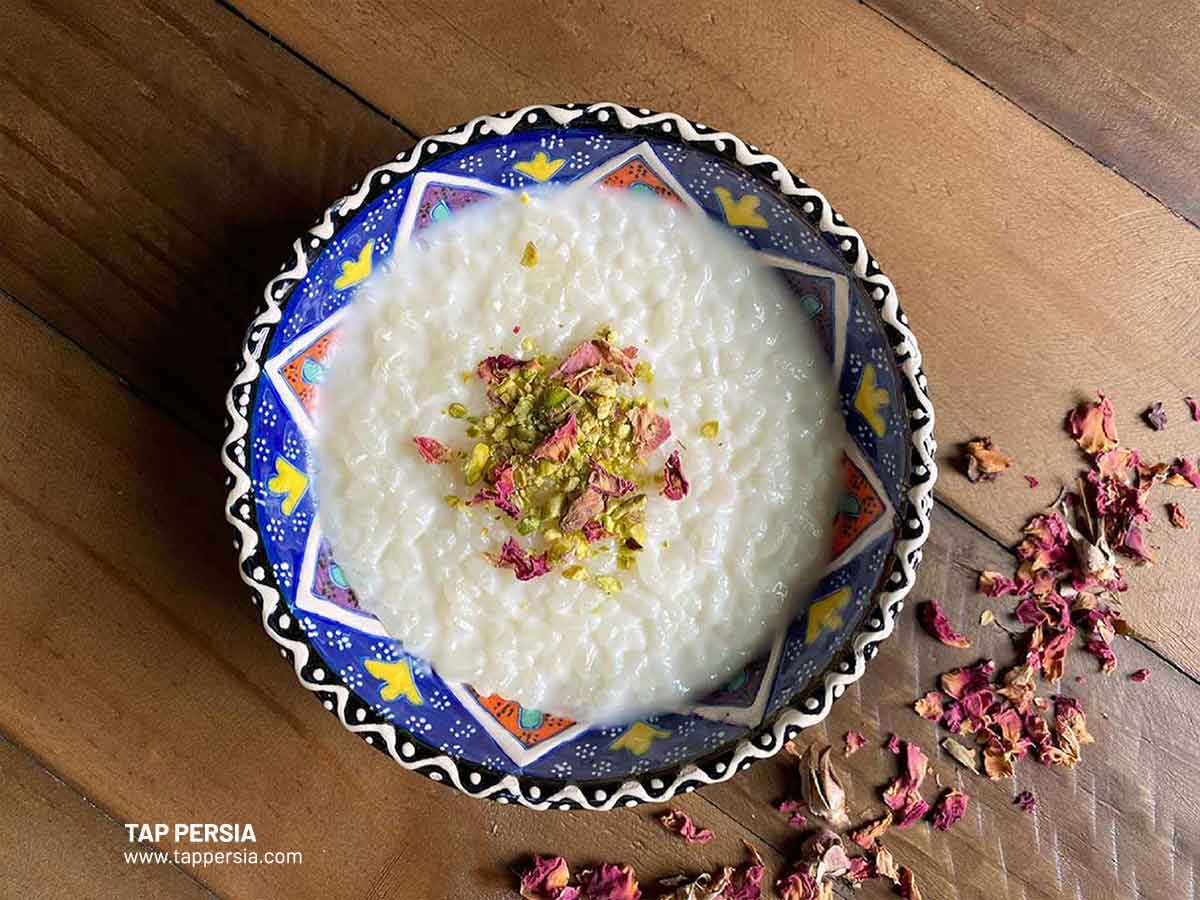
Shir Berenj is a traditional Persian milky rice pudding that is frequently served at Iftar, the evening meal during Ramadan. The majority of the ingredients are rice, milk to give it a creamy texture, and pure rosewater for flavor.
Without this traditional dessert, no vacation to Iran is complete. Shir Berenj may be enjoyed in countless ways. For example, you can add melted chocolate, nuts, fruits or maple syrup on the top.
22.Fereni
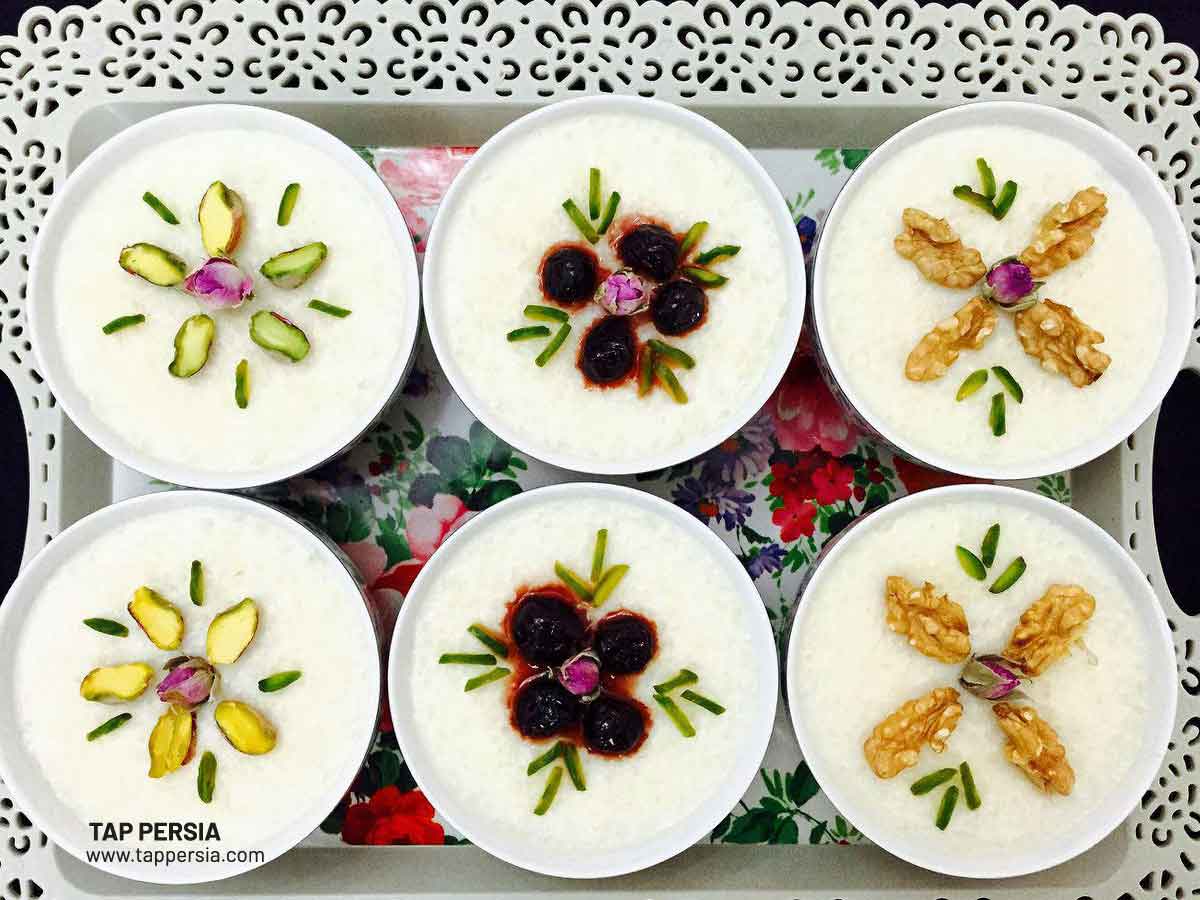
Rice flour, rose water, milk, sugar, a dash of pistachios, cardamom and cinnamon are the main ingredients in the classic Persian pudding dish known as Fereni.
Served warm or chilled, this straightforward Persian delicacy made with rice flour is wonderfully soothing on chilly days.
What are some vegan-friendly Iranian desserts?
Persian Halwa is suitable for vegans. It is a well-liked dessert with a rich and satiating flavor that is typically prepared for religious occasions or given to guests after funeral rituals.
Are there any gluten-free Iranian desserts?
A gluten-free variant is Masghati. It is well known across Iran and is mostly made of starch, which gives it a smooth, jelly-like feel. The Masghati is enhanced with saffron, nuts, and rosewater, which gives it a sweet and nutty flavor.
What are some traditional Iranian cakes?
Ranginak, a Persian date cake, and Qottab, a packed pastry resembling Italian wedding cookies in flavor and texture, are two examples of Iranian cakes.



Comment (0)